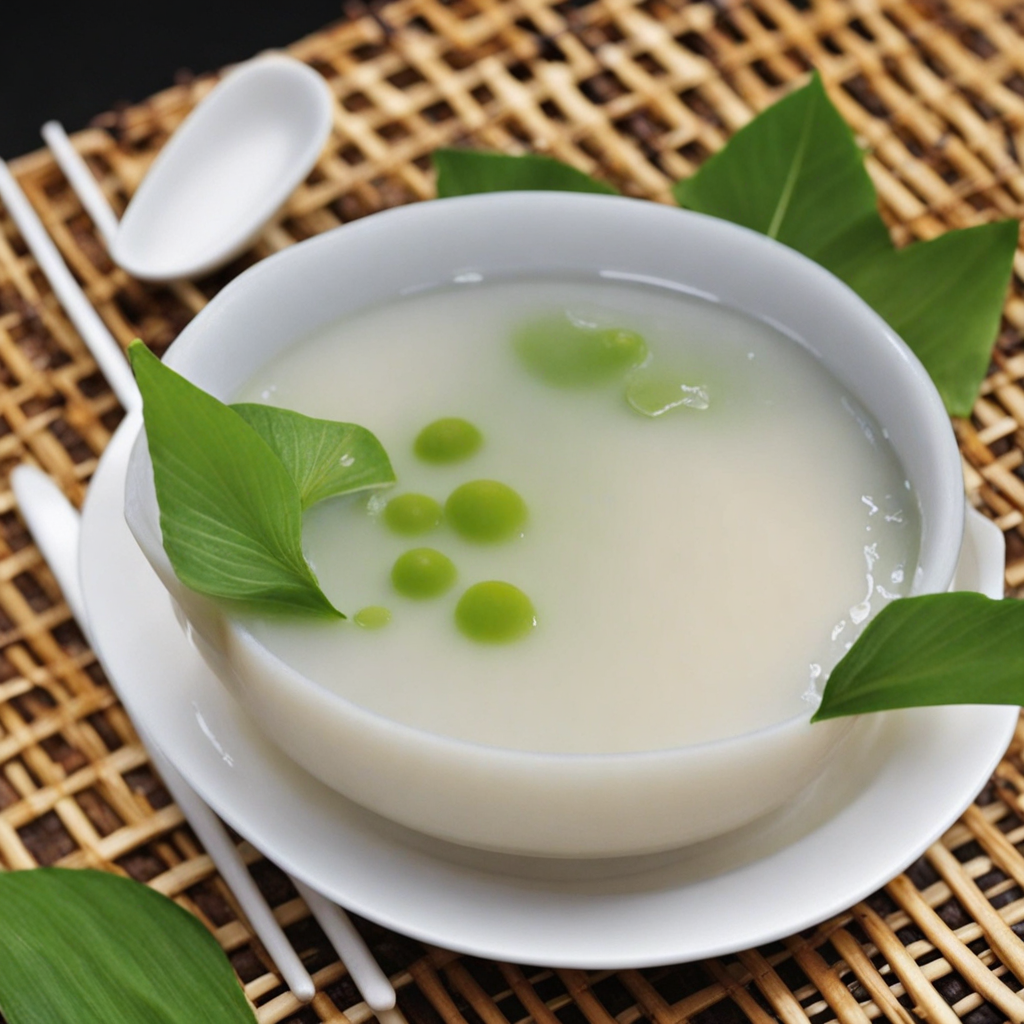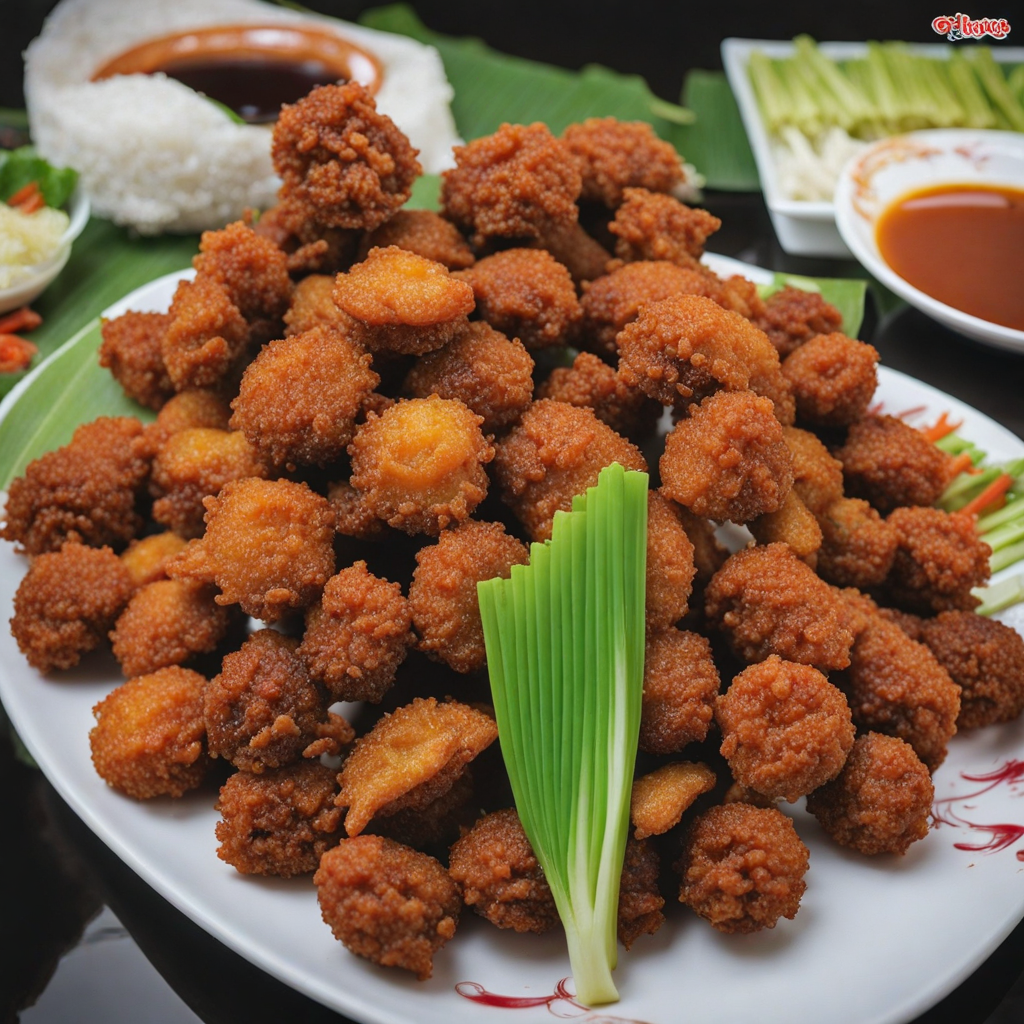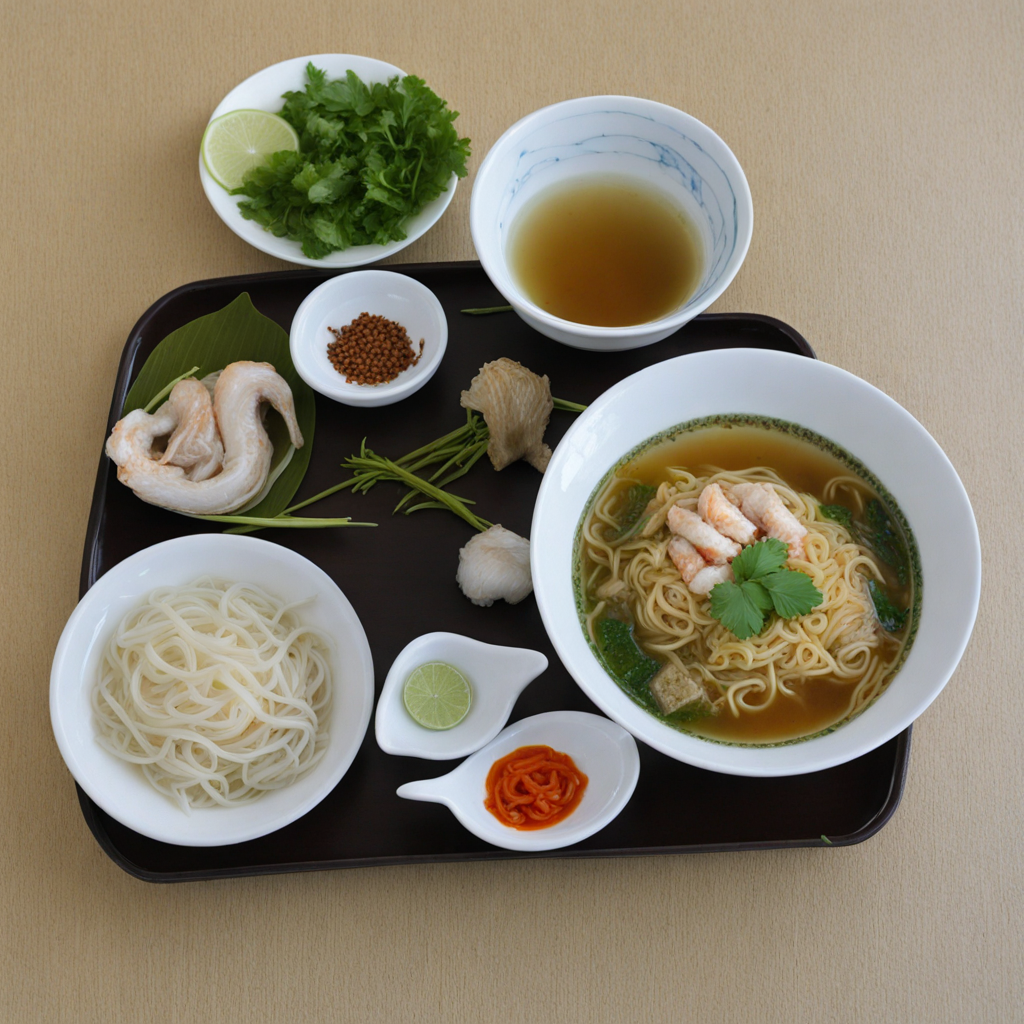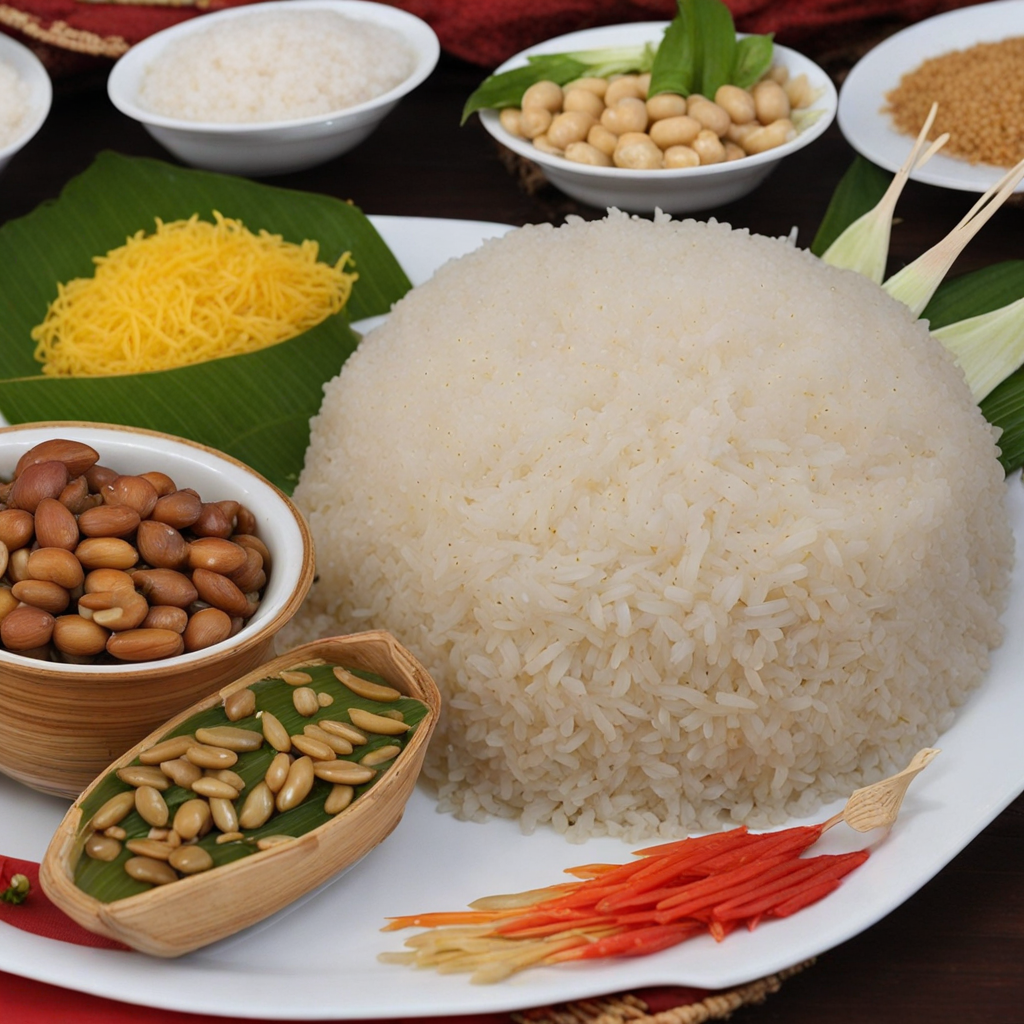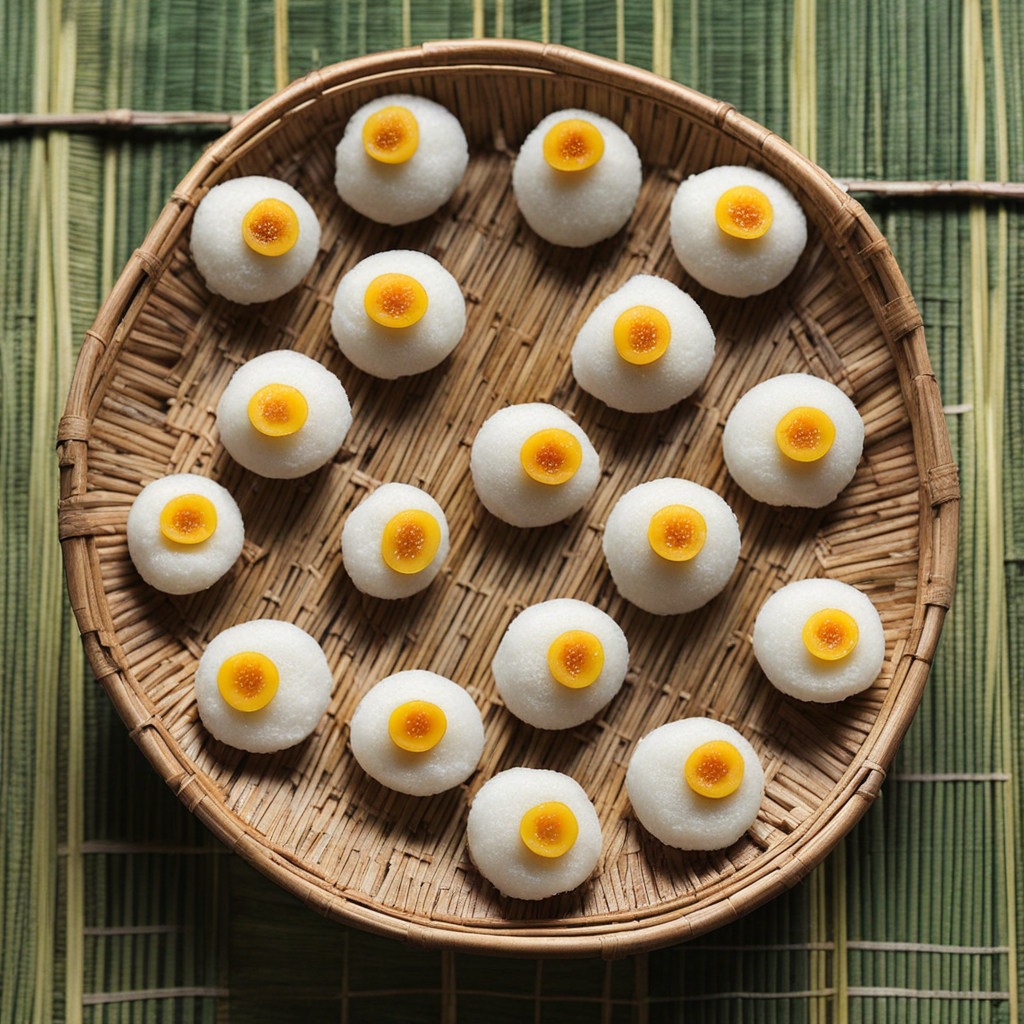Shwe Yin Aye
Shwe Yin Aye is a delightful dessert from Myanmar that stands out for its unique blend of flavors and textures. This traditional sweet treat typically features a base of coconut milk, which is rich and creamy, providing a luscious foundation for the dish. The coconut milk is often sweetened with sugar and sometimes flavored with pandan leaves, giving it a fragrant aroma that enhances the overall experience. The dessert is usually served over a bed of crushed ice, making it a refreshing option that is especially popular in the warm climate of Myanmar. In addition to the creamy coconut base, Shwe Yin Aye is adorned with a variety of colorful and chewy ingredients that add both texture and visual appeal. Common additions include glutinous rice balls, which are soft and slightly chewy, and various types of jelly or agar, which provide a delightful bounce. Some versions may also incorporate sweet corn or sago pearls, further diversifying the mouthfeel and flavor profile. Each spoonful of Shwe Yin Aye is a harmonious blend of creamy, sweet, and chewy elements that tantalize the taste buds. One of the most appealing aspects of Shwe Yin Aye is its versatility. While the traditional version is beloved, variations abound, allowing for personal touches and creativity. Some people may add fruits such as ripe bananas or mangoes to the mix, while others might sprinkle in some roasted peanuts for added crunch. This adaptability not only makes Shwe Yin Aye a beloved dessert during festive occasions but also a comforting treat enjoyed throughout the year. With its rich flavors and inviting textures, Shwe Yin Aye is a perfect way to explore the sweet side of Myanmar's culinary heritage.
How It Became This Dish
The History and Cultural Significance of 'ရွှေရင်အေး' (Shwe Yin Aye) in Myanmar #### Origins Shwe Yin Aye, a traditional Burmese dessert, is a delightful combination of flavors and textures that speaks to the rich culinary heritage of Myanmar. The name itself translates to "golden sweetness," aptly reflecting its vibrant presentation and delicious taste. This dessert is primarily made from a base of coconut milk, agar jelly, and a variety of other ingredients such as sago pearls, sweetened fruits, and sometimes even a splash of pandan or other flavorings. The origins of Shwe Yin Aye can be traced back to the diverse culinary practices prevalent in the region. Myanmar, located at the crossroads of Southeast Asia, has a unique food culture that has been influenced by neighboring countries such as India, China, and Thailand. The use of coconut milk, for instance, is a common element in many Southeast Asian cuisines and highlights the tropical abundance of the region. Historically, the use of gelatinous substances like agar can be linked to the availability of seaweed along the coasts of Myanmar, which has been utilized in various ways for centuries. The combination of these ingredients in Shwe Yin Aye likely emerged as a way to celebrate the natural bounty of the land and the influence of trade routes that facilitated the exchange of culinary techniques and ingredients. #### Cultural Significance Shwe Yin Aye is more than just a dessert; it holds a special place in the hearts of the Burmese people and is often associated with celebrations and communal gatherings. Its vibrant colors and textures make it a visually appealing dish that is perfect for festive occasions. Traditionally served cold, it is particularly popular during the hot months, serving as a refreshing treat to combat the heat. In Burmese culture, food plays an essential role in social gatherings and religious observances. Shwe Yin Aye is often prepared for family reunions, weddings, and festivals, symbolizing unity and happiness. Its preparation and sharing reflect the importance of togetherness in Burmese society. One of the most notable occasions for enjoying Shwe Yin Aye is during the Thingyan festival, which marks the Burmese New Year. This water festival, characterized by the playful splashing of water, is a time for cleansing and renewal. Shwe Yin Aye, with its refreshing qualities, becomes a staple during this time, offering a sweet taste of new beginnings. #### Development Over Time Throughout the years, Shwe Yin Aye has undergone various transformations, reflecting both the changing tastes of the people and the influence of globalization. In its early iterations, the dessert was likely simple, relying on fresh, local ingredients. However, as Myanmar opened up to the world, new ingredients and culinary techniques began to seep into the traditional food landscape. Modern variations of Shwe Yin Aye may incorporate exotic fruits such as mango, jackfruit, or even lychee, showcasing the evolving palate of contemporary Myanmar. The introduction of food coloring and innovative presentations has also added an artistic flair to this dessert, making it a popular item in both street food stalls and upscale restaurants. The rise of social media has played a significant role in the dessert's evolution, as visually stunning dishes gain popularity online. Many young chefs and home cooks have taken to Instagram and Facebook to showcase their unique renditions of Shwe Yin Aye, experimenting with flavors and presentation styles. This has created a vibrant community of food enthusiasts who are eager to share their culinary creations and inspire others. Moreover, the globalization of cuisine has brought international flavors into the mix. Some modern versions of Shwe Yin Aye may include elements from Western desserts, such as whipped cream or chocolate, blending traditional Burmese flavors with contemporary culinary trends. This fusion reflects a broader trend in Myanmar’s food culture, where traditional dishes are being reimagined for a new generation. #### Ingredients and Preparation The preparation of Shwe Yin Aye is as important as its history and cultural significance. While there are many variations, the basic components remain consistent. The primary ingredients include: 1. Coconut Milk: This is the rich and creamy base of the dessert, providing a luxurious mouthfeel. 2. Agar-Agar: Derived from seaweed, this gelatinous substance is used to create the jelly-like texture that characterizes Shwe Yin Aye. 3. Sago Pearls: These small, translucent pearls add a unique chewy texture and are often used in various Southeast Asian desserts. 4. Fruits: A medley of fruits, both fresh and canned, is commonly added for sweetness and color. Popular choices include jackfruit, sweetened red beans, and various tropical fruits. 5. Sugar and Salt: These are essential for balancing the flavors, with sugar providing sweetness and a pinch of salt enhancing the overall taste. The preparation process is relatively straightforward but requires attention to detail. First, the agar-agar is dissolved in boiling water, then combined with coconut milk and sugar. Once the mixture cools slightly, it can be poured into molds or bowls along with the sago pearls and fruits. After setting in the refrigerator, the dessert is served chilled, often garnished with additional coconut milk or a sprinkle of shaved ice. #### Conclusion Shwe Yin Aye is a testament to Myanmar's rich culinary history and cultural significance. Its origins, deeply rooted in local ingredients and traditional practices, have evolved over the years, reflecting the dynamic nature of food culture in the face of globalization and modern influences. As Myanmar continues to navigate the complexities of the modern world, Shwe Yin Aye serves as a delicious reminder of the importance of community, celebration, and the joy of sharing food. Whether enjoyed during a festive occasion or as a simple dessert at home, this delightful treat encapsulates the spirit of Myanmar, bridging the past with the present in every sweet, creamy bite.
You may like
Discover local flavors from Myanmar


